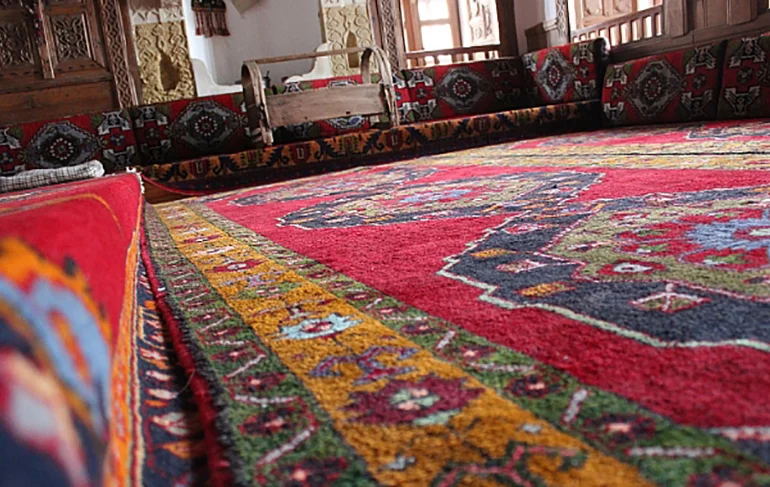
Taşkale Carpet: A Weaving Art Coming from History
Taşkale carpet is a historically and culturally important type of carpet woven in Taşkale village of Karaman. Taşkale carpets, thought to have been produced since the 12th century, stand out with their unique patterns, colors and weaving techniques.
History: The history of Taşkale carpet weaving dates back to the Seljuk period. With the Seljuks coming to Anatolia, carpet weaving began to develop in the region and Taşkale also benefited from this development. Carpet weaving became even more widespread in Taşkale, which came under Ottoman rule in the 15th century. Taşkale carpets became famous when carpets were sent to palaces and mosques during the Ottoman period.
Weaving Technique: Taşkale carpets are woven with the reverse weaving technique. In this technique, patterns are created by tying knots from the back of the carpet. In this way, the front of the carpet has a flat and smooth appearance. The knots used in Taşkale carpets are a very strong knot type called "Turkish knot".
Patterns and Colors: Geometric patterns and plant motifs are generally used in Taşkale carpets. The most commonly used patterns include medallions, circles, stars and borders used on the edges of the carpets. The colors used in carpets are usually red, blue, green and yellow tones.
Taşkale Carpet Today: Taşkale carpet weaving continues today. There are still many masters and workshops in the village dealing with carpet weaving. Taşkale carpets are quite popular in domestic and foreign markets.
Details About Taşkale Carpet:
Taşkale carpets are generally woven from wool and silk threads.
The weaving density of the carpets varies between 200-500 knots/cm2.
The dimensions of Taşkale carpets are generally between 1-3 square meters.
Taşkale carpets have a very important value in terms of history and culture.
If you want to buy a Taşkale carpet or learn more about carpet weaving in Taşkale, you can visit Taşkale Village.

